Matewan Massacre Historical Marker
Introduction
Text-to-speech Audio
Images
This historical marker was dedicated in 2012
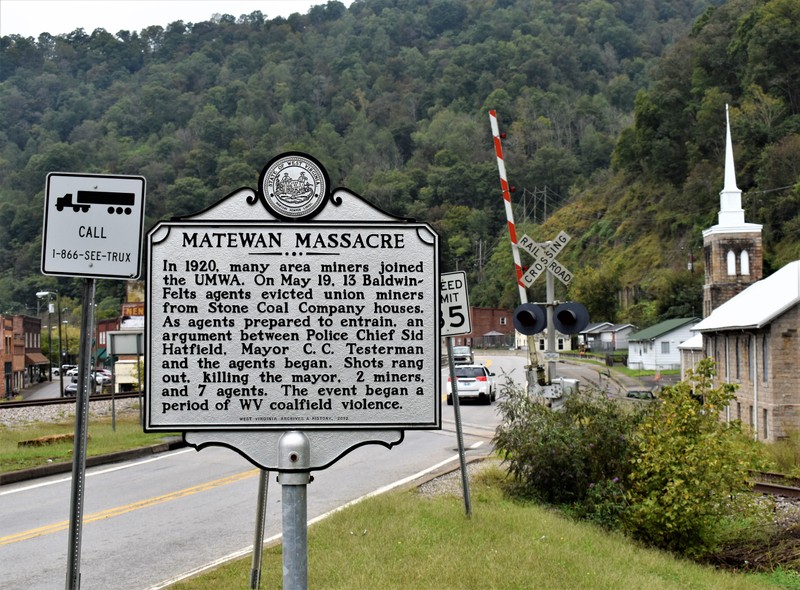
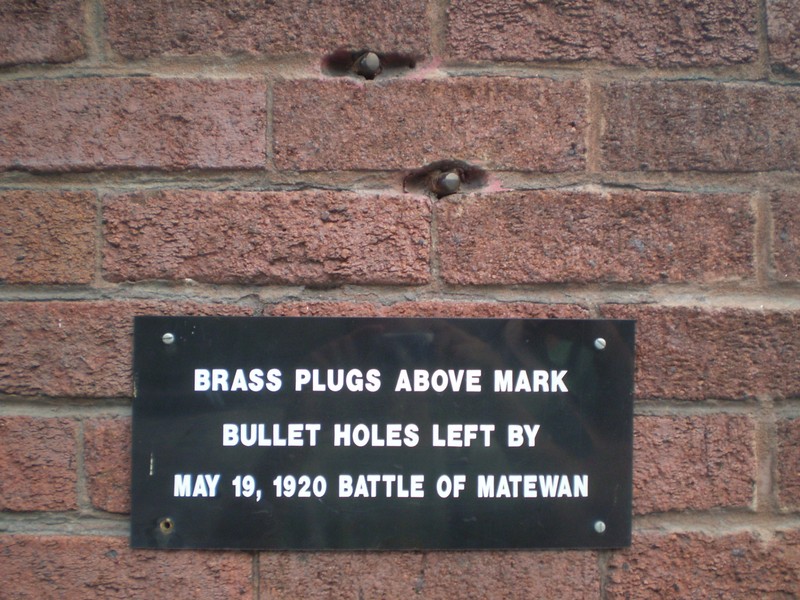

Matewan Rail Station.
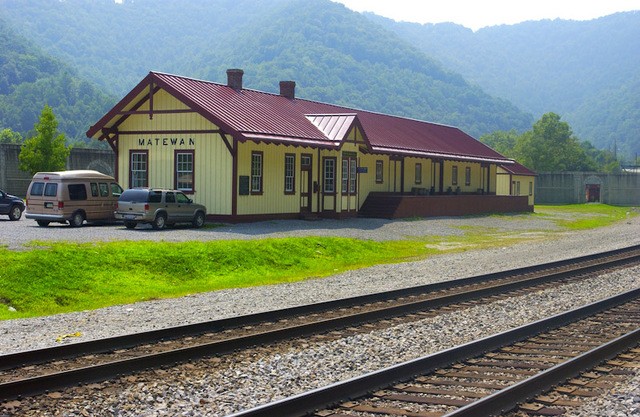
Sid Hatfield.
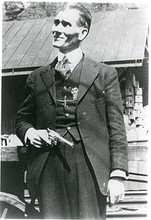
Baldwin Felts Detectives.
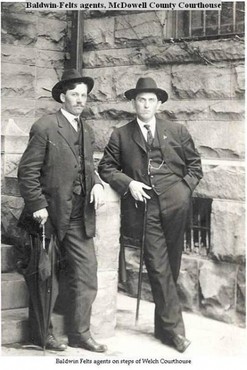
Backstory and Context
Text-to-speech Audio
The Battle of Matewan, more commonly known as the Matewan Massacre, was a battle fought between the Baldwin-Felts Detective Agency and local miners. It took place in Mingo County, West Virginia, and was another instance in history where a struggle for better working conditions and salaries was waged. Miners during this time were paid low wages and worked under notoriously unsafe conditions. Instead of being paid in cash, the miners were paid with a currency known as scrip. Scrip could only be used in company stores to buy company products or directly deducted from miners' pay as rent expenses. As such, the company could control their workers as the value of any wages could be altered by raising the cost of rent and goods. It also meant that any wages paid to miners would return to the company and left it up to management to determine whether they would charge above or below market rates. At some company stores, prices were competitive or even better than a miner might find elsewhere. However, company stores were created primarily to control the labor force and many miners resented the practice and demanded payment in cash. They also wanted the state to regulate payments based on tonnage, as they provided evidence that coal companies under-weighed the coal they produced and often failed to pay the miners on days when the daily quota was not met.
The success and effectiveness of strikes across the United States led the local miners of Matewan to sign to the Union. As a result, coal companies (the primary company involved in the Matewan Massacre was the Stone Mountain Coal Company) retaliated in order to control their miners. A group of Baldwin-Felts detectives were hired to evict the miners and their families from their homes. This unfair treatment led to a bloody and brutal shootout on May 19, 1920 that left seven Baldwin-Felts detectives, the Mayor of Matewan and two miners dead. Although the Massacre was a brief exchange, “the events that followed in its wake included a 28-month strike that led to two dozen deaths, West Virginia’s longest and most controversial murder trail to date, a United States Senate investigation, the retaliatory assassination of Sid Hatfield, and the largest armed civilian insurrection since the Civil War” (Bailey, Matewan Before the Massacre, 7). Despite these events, the brave stand made by the miners, paved the way for fair pay and better working conditions within southern West Virginia.
The Battle of Matewan may appear as a small event, but it led to greater unity among miners leading up to the proliferation of unions in the southern West Virginia coalfields during World War II. As miners organized under the Democratic Party, workers began to have a stronger voice in government culminating with the Wagner Act. This law gave the federal government power to intervene when a majority of workers supported a union. The Wagner Act also required management to recognize the right of workers to form a union until it was amended by the Taft-Hartley Act.
Mingo County is known as “Bloody Mingo” because of its labor strife and corrupt politics. Visitors to the historic town of Matewan will learn about Mingo County’s mine wars and the gruesome battles of the early 20th century that spurred many miners toward unionization. Mingo County is also in the heart of the coalfields of West Virginia. Those who visit during the town's Heritage Day, which takes place annually on the Saturday closest to the anniversary of the Matewan Massacre, will be granted the opportunity to watch a reenactment of the battle while also getting a tour of the town.
Sources
Bailey, Rebecca. Matewan Before the Massacre: Politics, Coal, and the Roots of Conflict In A West Virginia Mining Community. Morgantown, West Virginia University Press, 2008. Savage, Lon. "Matewan Massacre." E-WV. Accessed April 14, 2015. http://www.wvencyclopedia.org/articles/1576. Savage, Lon. "The Battle of Matewan." Matewan Online. http://www.matewan.com/History/battle.htm (accessed October 30, 2014).
